Eye in the sky
Enjoy Ann Arbor from the rare vantage point of an autonomous drone as the team in Michigan Photography fires up its little flier to capture these unusual shots. (Captions sourced by Claudia Larochelle.)
-
The Cube
Unmanned aircraft systems, or drones, are an integral part of various research, educational, and operational activities at U-M.
Although the Cube is enormous (it weighs 2,400 pounds), it will rotate on its axis with just a gentle push.
(Image: Roger Hart, Michigan Photography)
-
BeGob Sculpture
The number of small hobbyist drones registered in the United States totaled 1.1 million units in 2019, according to the Federal Aviation Administration.
Begob by Alexander Liberman was completed by the artist in 1989 and came to the Robert H. Lurie Engineering Center on the North Campus from a private sculpture park in New York where it had been on display since its completion.
(Image: Eric Bronson, Michigan Photography)
-
West Hall
An outdoor fly lab for testing autonomous aerial vehicles opened at U-M’s College of Engineering in fall of 2017.
Campus romantics believe that any couple who kisses under the West Hall Engineering Arch at midnight is destined to marry.
(Image: Roger Hart, Michigan Photography)
-
Block M on the Diag
The number of commercial drones is expected to double by 2024 according to the Federal Aviation Administration.
Campus legend has it that if you step on the Block M you will flunk your first blue book exam. Hence many students diligently avoid trodding on the marker.
(Image: Roger Hart, Michigan Photography)
-
Michigan League Friendship Statue
The U.S. is currently the world’s largest drone market.
Drones offer the opportunity to capture images we don’t often see from below. This female statue in flowing classical dress watches over Ingalls Mall from atop the Michigan League. Designed by Irving Pond and sculpted out of limestone by Nellie Verne Walker, her name is Friendship.
(Image: Roger Hart, Michigan Photography)
-
Indexer II
In terms of constitutional rights, using drone footage is not a violation. The police have the right to use footage from a crime scene if it was done by a drone unless it was in a restricted area.
Indexer II by Kenneth Snelson is located on North Campus on the South end of Reflecting Pool. It was a gift of the Engineering Class of 1950.
(Image: Eric Bronson, Michigan Photography)
-
The Law School Quad
As of July 21, 2020, there were 1,662,819 drones registered in the United States by the Federal Aviation Administration.
Ours captured this perspective of the striking Gothic-style buildings that form the William W. Cook Law Quadrangle.
(Image: Roger Hart, Michigan Photography)
-
The Top of Lorch Column
These devices first came to the market in the 1990s and were developed by the military. Drones were invented because they are needed in small spaces where a normal helicopter can’t go or in war zones where it is too dangerous to send pilots.
The truncated column was originally installed in the courtyard of Lorch Hall (the original home of the College of Architecture). In 2007, the column was moved to North Campus, mounted on a tall base, with a steel element inserted to raise the column to what would have been its original height had it been installed on a building.
(Image: Eric Bronson, Michigan Photography)
-
Top of Lurie Tower
M-Air is a 10,000-square-foot, four-story, netted scientific facility that enables the study of autonomous and collaborative robotics in the “wild.”
The drone testing site is on North Campus, not far from the Ann and Robert H. Lurie Tower, a memorial built in 1996. The tower houses a 60-bell carillon, one of the University’s two grand carillons.
(Image: Eric Bronson, Michigan Photography)
-
Phoenix Memorial Lab
While drones serve a variety of purposes, such as recreational, photography, commercial, and military, their two basic functions are flight and navigation.
The Phoenix Memorial Lab building is a part of the Michigan Memorial-Phoenix Project, dedicated to the peaceful uses of atomic energy in memory of the members of the U-M family who died in World War II.
(Image: Eric Bronson, Michigan Photography)
-
The Lorch Column
In Britain, manufacturers have suggested painting drones bright colors as a way to make them seem friendlier and less reminiscent of war zones, reports The Guardian.
The Lorch Column was named in honor of Emil Lorch, the first dean of the Taubman College of Architecture + Urban Planning.
(Image: Eric Bronson, Michigan Photography)
-
Rackham and Ingalls Mall
New regulations oblige people to register drones that weigh more than 55 pounds with the Federal Aviation Administration.
Ingalls Mall is located in front of the Horace H. Rackham School of Graduate Studies near the Burton Memorial Tower. It is the home of a fountain by Carl Milles titled “On a Sunday Morning.”
(Image: Roger Hart, Michigan Photography)
-
Taubman College, Stamps School of Art and Design
The United States began developing UAV technology during the First World War in 1916 and created the first pilotless aircraft.
U-M’s Art and Architecture Building provides nearly 240,000 square feet of space equally divided between two academic units of the University: Taubman College of Architecture + Urban Planning and the Stamps School of Art & Design.
(Image: Eric Bronson, Michigan Photography)

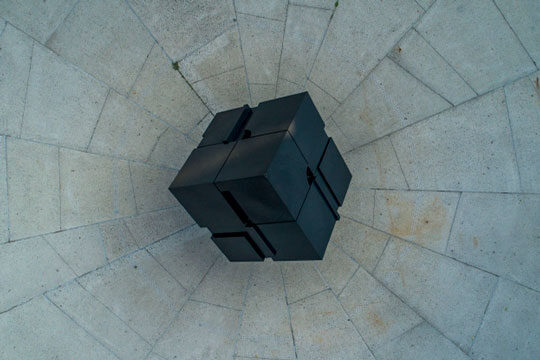

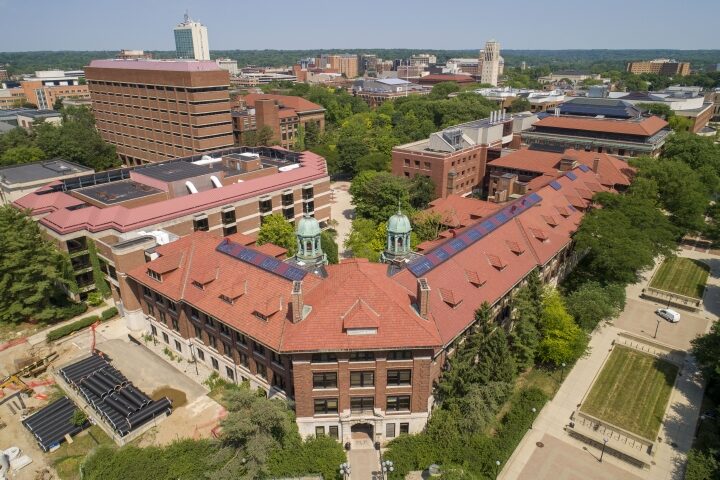
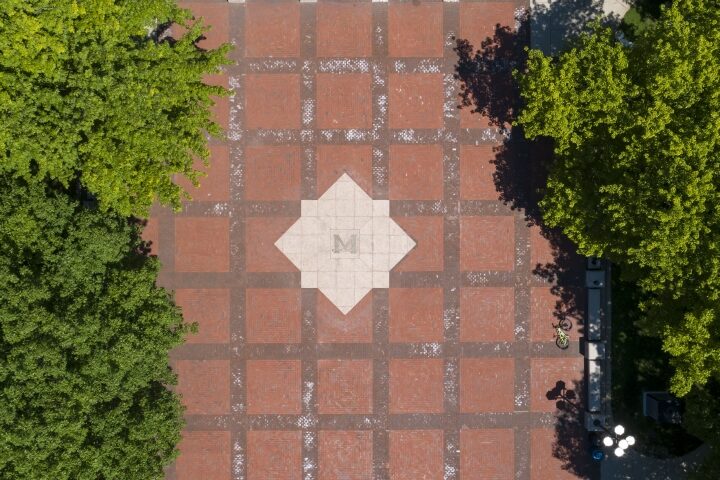
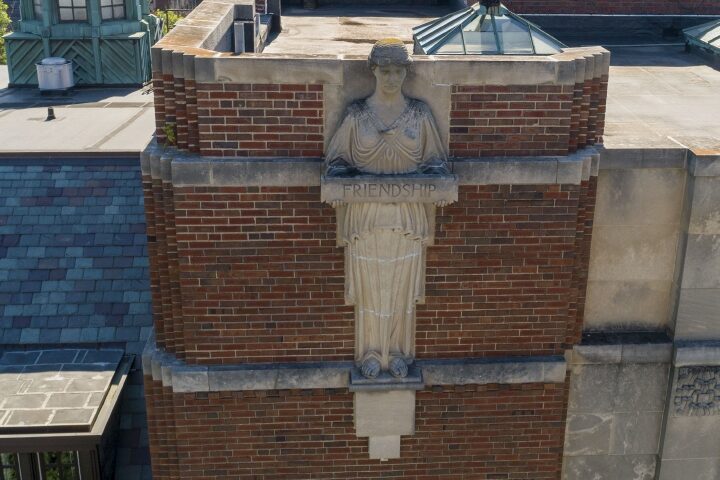


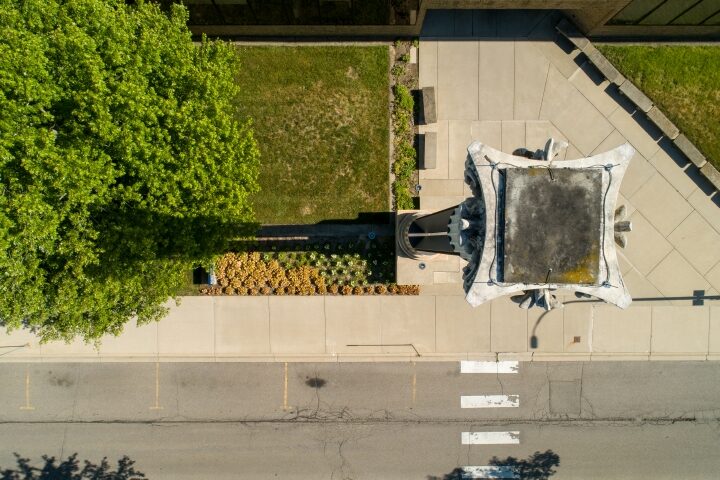
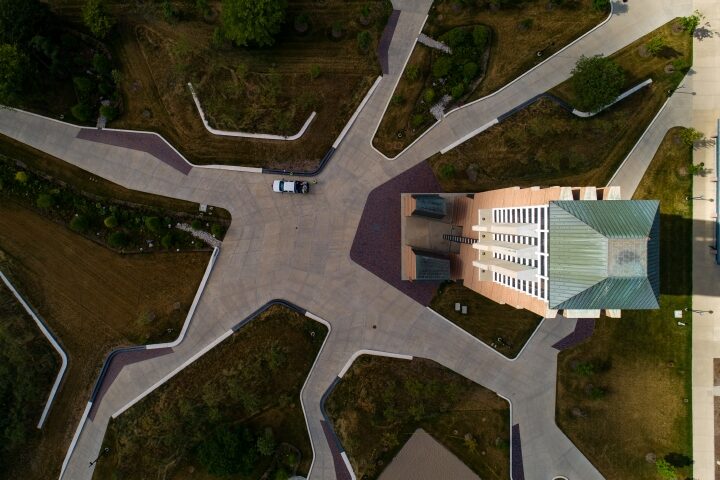
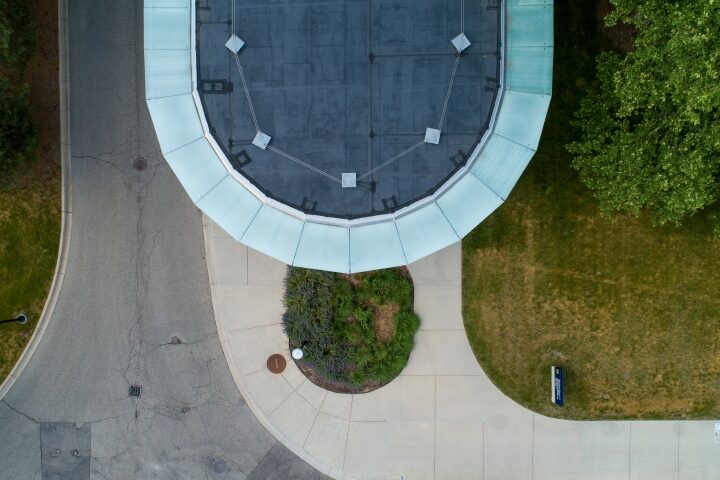


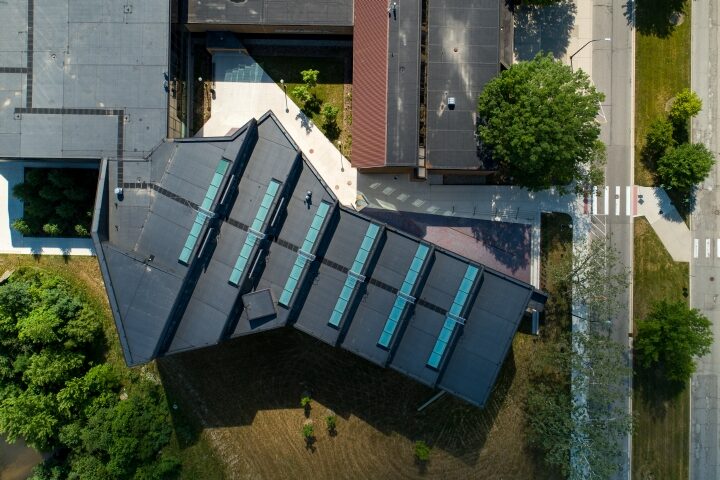

Susan Montgomery - 1984
We are so fortunate to have such a creative, dedicated team of photographers, awesome photos!!
Reply
John Herold - '63,65,68
The drone photos add a unique meaning to a claim that many things look different when one is high.
Reply